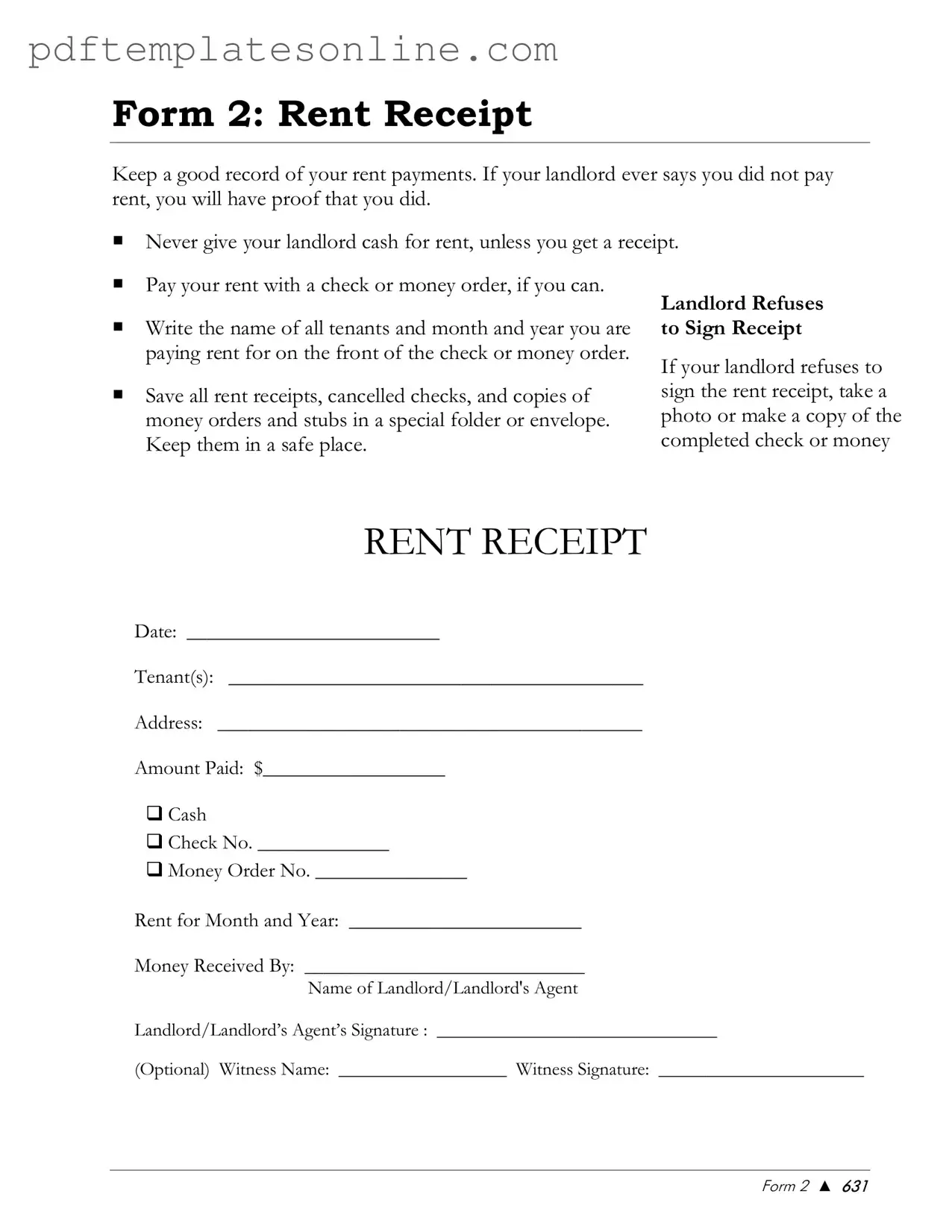Blank Rental Receipt Form
The Rental Receipt form serves as a crucial document for both landlords and tenants, providing a written record of rent payments made. This form details essential information such as the date, tenant's name, address, and the amount paid, whether in cash, check, or money order. By documenting these transactions, both parties can maintain transparency and avoid potential disputes.
Access Rental Receipt Editor Now
